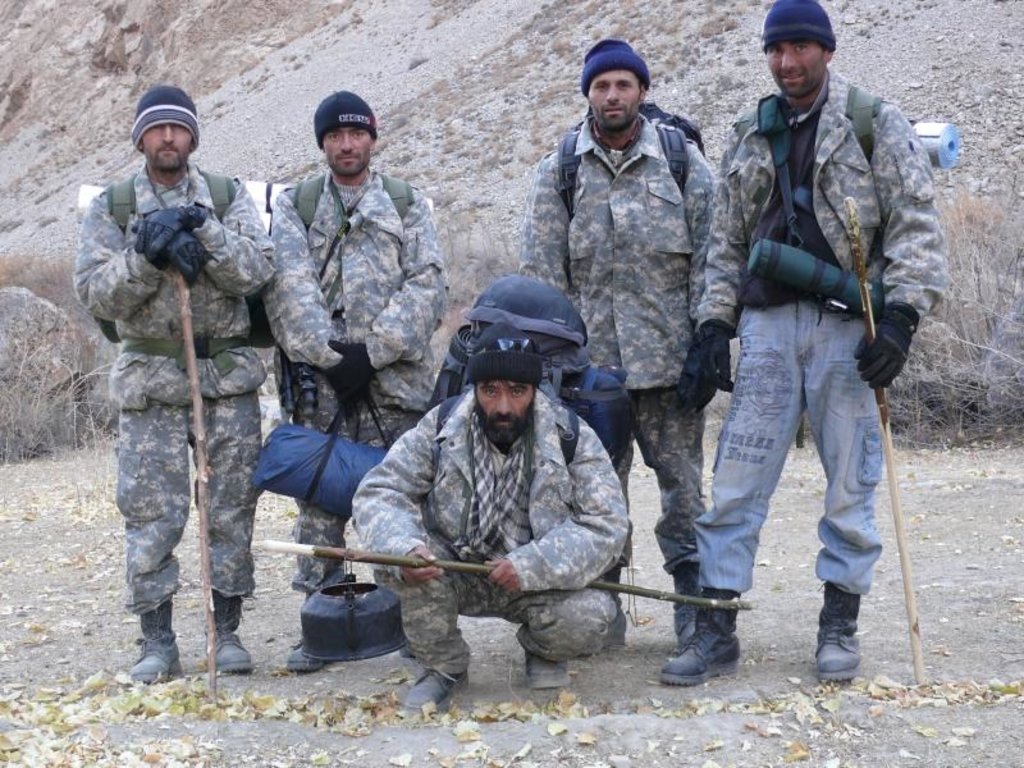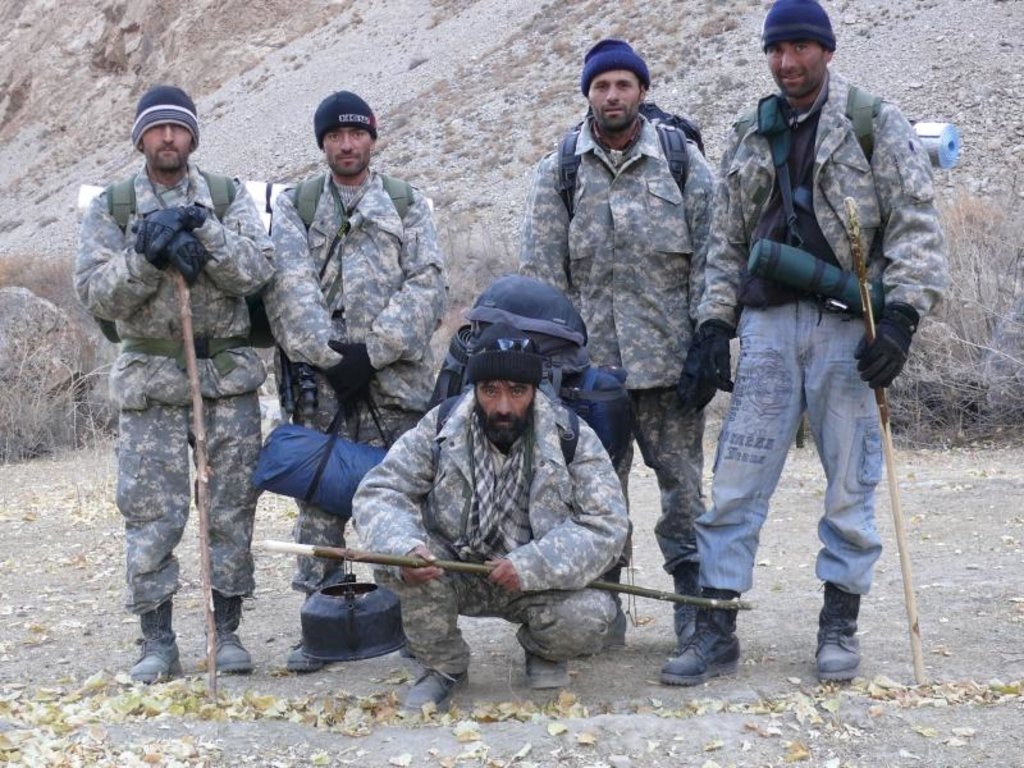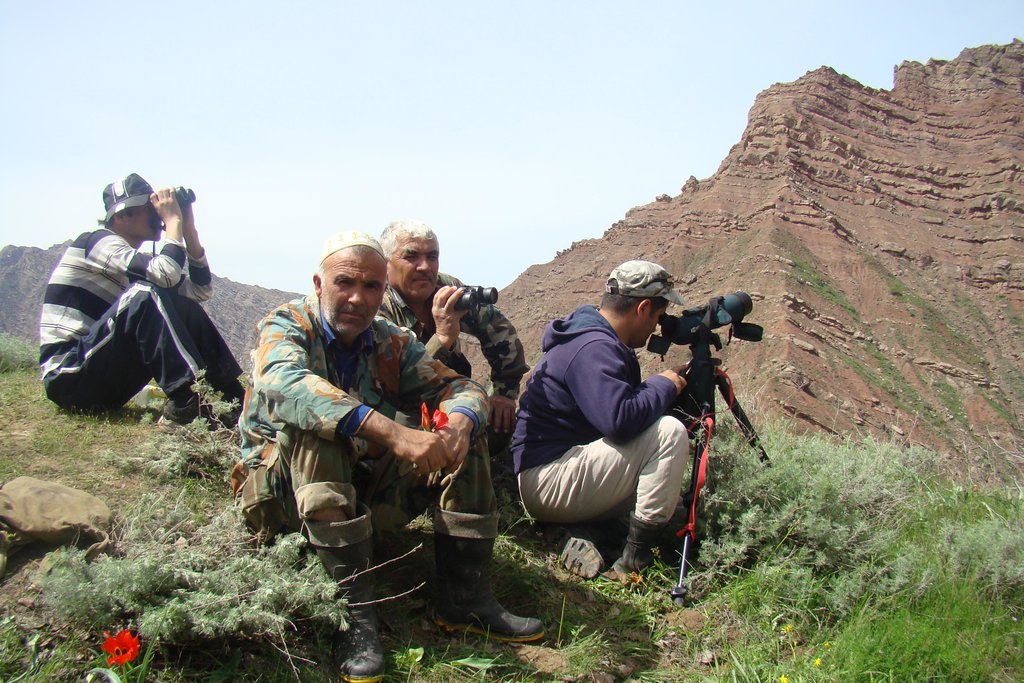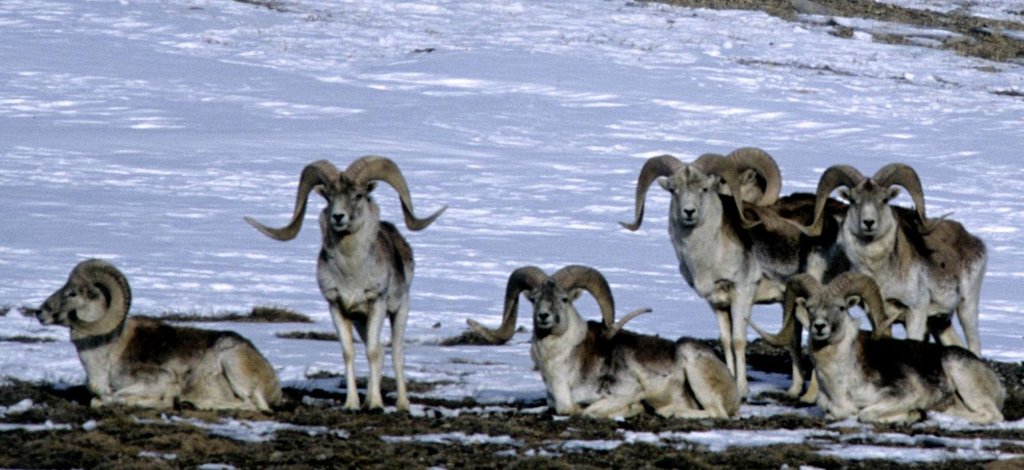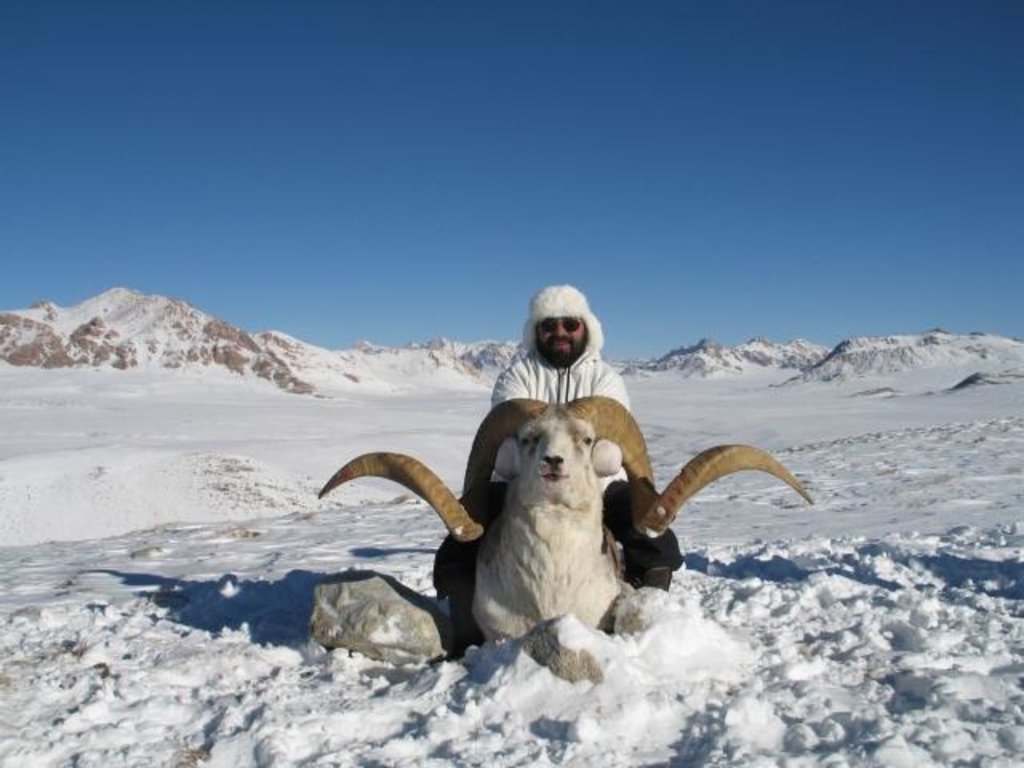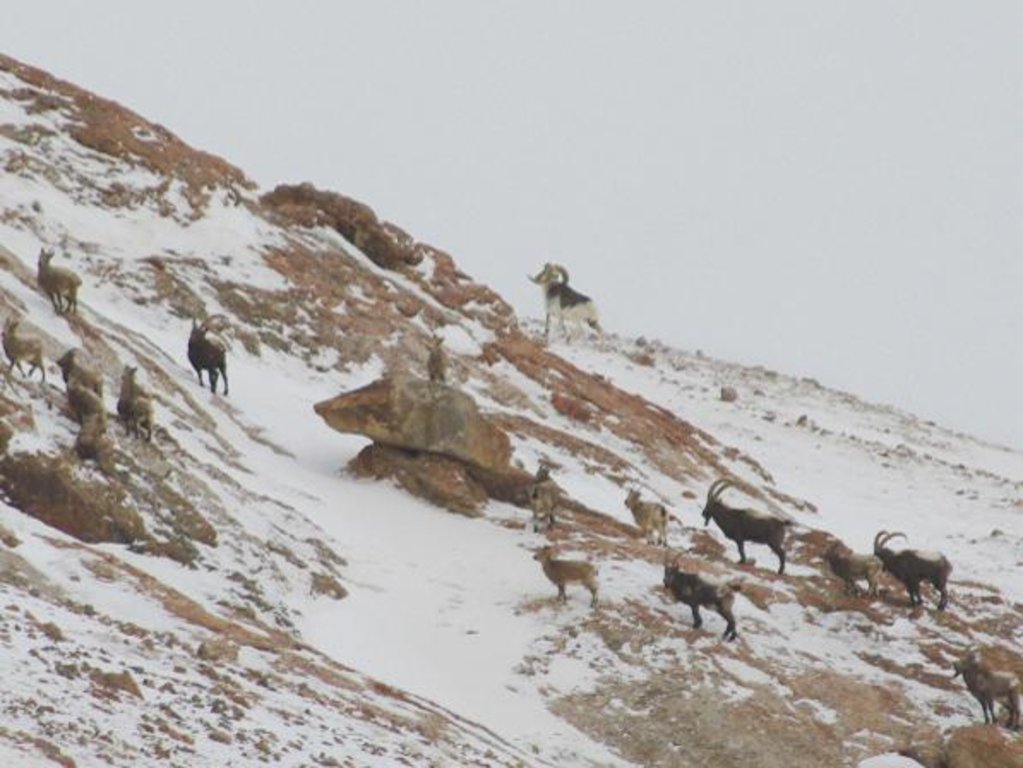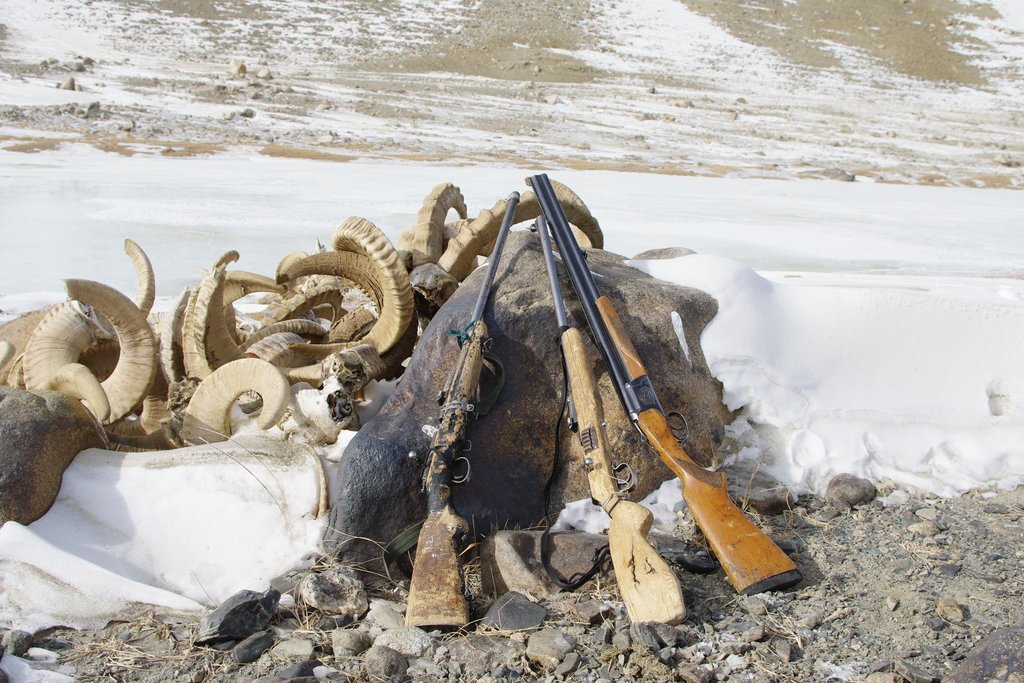Protection and sustainable of mountain ungulates [ทาจิกิสถาน]
- ผู้สร้างสรรค์:
- การอัพเดท:
- ผู้รวบรวม: Natalia Mityakova
- ผู้เรียบเรียง: –
- ผู้ตรวจสอบ: David Streiff
approaches_2678 - ทาจิกิสถาน
ดูส่วนย่อย
ขยายทั้งหมด ย่อทั้งหมด1. ข้อมูลทั่วไป
1.2 รายละเอียดที่ติดต่อได้ของผู้รวบรวมและองค์กรที่เกี่ยวข้องในการประเมินและการจัดเตรียมทำเอกสารของแนวทาง
1.3 เงื่อนไขที่เกี่ยวข้องกับการใช้ข้อมูลที่ได้บันทึกไว้ผ่านทาง WOCAT
วันที่เก็บรวบรวมข้อมูล (ภาคสนาม):
01/04/2009
ผู้รวบรวมและวิทยากรหลักยอมรับเงื่อนไขเกี่ยวกับการใช้ข้อมูลที่ถูกบันทึกผ่านทาง WOCAT:
ใช่
2. คำอธิบายของแนวทาง SLM
2.1 การอธิบายแบบสั้น ๆ ของแนวทาง
The sustainable use of wild mountain ungulates by local peoplefor eco-tourism, hunting tourism and subsistence hunting stimulates the protection of the populations and habitats of these species thus providing an alternative and adapted land-use option contributing to climate resilience trough biodiversity conservation, avoidance of desertification and diversification of land-use.
2.2 การอธิบายอย่างละเอียดของแนวทาง
การอธิบายอย่างละเอียดของแนวทาง:
Aims / objectives: Protection and sustainable use of wild mountain ungulates (ibex, markhor, argali, urial) in Tajikistan.
Methods: Assignment of hunting grounds to organizations (private or non-commercial, non-governmental) established by local people. Protection of the animal populations against poaching, elaboration and implementation of management plans, population monitoring. Based on monitoring results issuing of permits for use of animals. Use of permitted quota for hunting tourism and subsistence hunting. Additionally eco-tourism (non-consumptive).
Role of stakeholders: Local people, in particular active and former hunters are the main actors. Collaboration witth state agencies in charge of nature protection and hunting and with scientific institutions as well as with touroperators is supported by the project.
Other important information: The approach has in fact been implemented already since the 1990s, without project support. With project assistance it is refined, more focussed on community involvement and sustainability of used wildlife populations.
2.3 รูปภาพของแนวทาง
2.5 ประเทศ ภูมิภาค หรือสถานที่ตั้งที่ได้นำแนวทางไปใช้
ประเทศ:
ทาจิกิสถาน
ภูมิภาค/รัฐ/จังหวัด: :
Tajikistan/Khatlon and GBAO
ข้อมูลเฉพาะเพิ่มเติมของสถานที่ตั้ง:
Shuroabad, Darvaz, Rushan, Ishkashim, Murghab
ความคิดเห็น:
The approach is applied in several model areas supported by a German development aid project and in large privately managed game management areas of up to 2,000 km². Model areas of the project are of 20 to 500 km².
2.6 วันที่เริ่มต้นและสิ้นสุดของแนวทาง
ระบุปีที่เริ่ม:
2008
2.7 ประเภทของแนวทาง
- ใช้โครงงานหรือแผนงานเป็นฐาน
2.8 เป้าหมายหรือวัตถุประสงค์หลักของแนวทาง
The Approach focused mainly on SLM with other activities (wildlife monitoring, involvement of local communities, sustainable hunting, trophy hunting, subsistence hunting, ecological tourism)
Populations of wild mountain ungulates are stable and in the range of the natural carrying capacity. Their sustainble non-consumptive and consumptive use supports local people and local rural development. The benefits from the sustainable use of mountain ungulates stimulates their protection and the protection of habitats, thus avoiding loss of biodiversity and land-degradation.
The SLM Approach addressed the following problems: Extirpation of wild mountain ungulates due to illegal and/or unregulated hunting and degradation of their habitats. This leads not only to loss of biodiversity but as well to the loss of land-use options. Well managed wild animals are less critical in terms of land degradation than livestock grazing.
2.9 เงื่อนไขที่เอื้ออำนวยหรือเป็นอุปสรรคต่อการนำเทคโนโลยีภายใต้แนวทางนี้ไปปฏิบัติใช้
บรรทัดฐานและค่านิยมทางสังคม วัฒนธรรม ศาสนา
- เป็นอุปสรรค
Difficulties to collaborate within the communities, tendencies to purchase individual interests seperately.
Treatment through the SLM Approach: Group facilitation. Insisting in large management units, collectively managed.
การมีไว้ให้หรือการเข้าถึงแหล่งการเงินและบริการ
- เป็นอุปสรรค
Lack of immediate income from wildlife. Expectations of external payment for work as rangers.
Treatment through the SLM Approach: Support with initial investment into needed equipment. Support of eco-tourism and hunting tourism development providing at least initial income.
การจัดตั้งระดับองค์กร
- เป็นอุปสรรค
So far no community could become wildlife manager. All initiatives are based on private organizations or NGO.
Treatment through the SLM Approach: Facilitation of linkages between wildlife managing organizsations and community institutions.
กรอบแนวทางในการดำเนินการด้านกฎหมาย (การถือครองที่ดิน สิทธิในการใช้ที่ดินและน้ำ)
- เป็นอุปสรรค
Long delay in assigning responsibility and authority for managing hunting grounds to community based organizations. Hesitance to devolve power to local people. Some species cannot yet been legally used due to national and international legal restrictions.
Treatment through the SLM Approach: Facilitation, support to state agencies in charge to develop adequate contracts. Support to improvement of national legal framework. Information of relevant international organizations and foreign decision makers on the impact of existing regulations.
ความรู้เกี่ยวกับ SLM การเข้าถึงการสนับสนุนด้านเทคนิค
- เป็นอุปสรรค
Population estimates for mountain ungulates are technically difficult and assumptions necessary to be fulfilled for estimates based on limited samples rarely fulfilled.
Treatment through the SLM Approach: Instead of population estimates index surveys providing minimum numbers are conducted and the methods are refined. The results of these index surveys are used for a careful and conservative suggestion of quota for sustainable use.
3. การมีส่วนร่วมและบทบาทของผู้มีส่วนได้ส่วนเสียที่เกี่ยวข้อง
3.1 ผู้มีส่วนได้ส่วนเสียที่เกี่ยวข้องในแนวทางนี้และบทบาท
- ผู้ใช้ที่ดินระดับท้องถิ่นหรือชุมชนระดับท้องถิ่น
Local users are the main actors in the model areas. They are supported by the project staff
Women are usually not much interested in hunting related issues. But they are intensively involved in tourism related activities.
In the community based NGO participate socially and economically disadvantaged groups. In particular the people living in remote mountain villages with limited income opportunities.
- องค์กรพัฒนาเอกชน
International NGO gives technical advise
National NGO is project implementer.
- ภาคเอกชน
Private conservancies and hunting concessions
- รัฐบาลแห่งชาติ (ผู้วางแผน ผู้ทำการตัดสินใจ)
Involvement of experts of relevant agencies. Close cooperation on all issues.
- องค์การระหว่างประเทศ
Financial support and inclusion in GIZ's regional programme on sustainable use of nature resources in Central Asia.
3.2 การเกี่ยวข้องของผู้ใช้ที่ดินระดับท้องถิ่นหรือชุมชนระดับท้องถิ่นในช่วงต่างๆของแนวทาง
| ความเกี่ยวข้องของผู้ใช้ที่ดินระดับท้องถิ่นหรือชุมชนระดับท้องถิ่น | ระบุผู้ที่มีส่วนเกี่ยวข้องและอธิบายกิจกรรม | |
|---|---|---|
| การริเริ่มหรือการจูงใจ | ระดมกำลังด้วยตนเอง | |
| การวางแผน | จ่ายเงินหรือสนับสนุนจากภายนอก | |
| การดำเนินการ | ปฏิสัมพันธ์ | |
| การติดตามตรวจสอบหรือการประเมินผล | จ่ายเงินหรือสนับสนุนจากภายนอก | |
| Research | ปฏิสัมพันธ์ |
3.4 การตัดสินใจเลือกใช้เทคโนโลยี SLM
ระบุผู้ที่ทำการตัดสินใจเลือกเทคโนโลยีมากกว่าหนึ่งวิธีไปปฏิบัติใช้:
- ผู้ใช้ที่ดินเป็นผู้ตัดสินใจหลัก โดยการสนับสนุนจากผู้เชี่ยวชาญ SLM
การอธิบาย:
Decisions were made in the frame of the project in workshops of interested community members involved in use of wildlife. Facilitation by the project's experts.
Decisions on the method of implementing the SLM Technology were made by mainly by land users supported by SLM specialists. All work is discussed in the local groups with support by the project's experts.
ลิงก์และโมดูล
ขยายทั้งหมด ย่อทั้งหมดลิงก์
ไม่มีลิงก์
โมดูล
ไม่มีโมดูล



